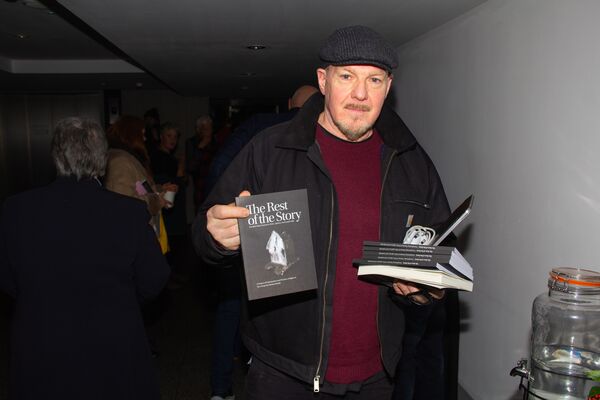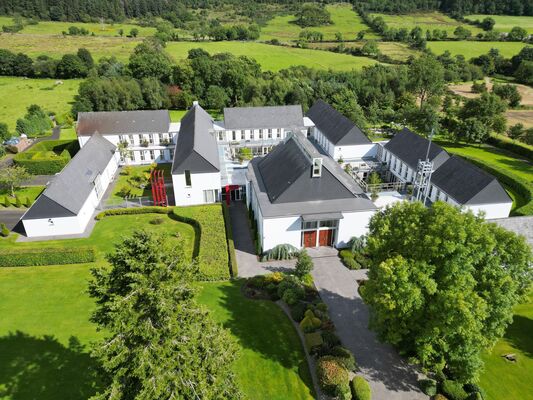I received great news the other day: my teacher, Ryushin Paul Haller, will be here in September to lead a retreat at Tobar Mhuire retreat house at Crossgar. This is another good sign that Covid must be over — just as I am witnessing a reduction in having to wear masks everywhere I go these days.
I remember our first Zen retreats 25 years ago in Drumallis Convent on the Coast Road at Larne.
Swimming Dragon Taichi Form 3: Review Class
— San Francisco Zen Center (@sfzc) May 12, 2022
With Liping Zhu
Mon 6/6 – Fri 6/10, 7:30 – 9am PT
This online morning practice will help to refine Swimming Dragon Form 3 and will offer the experience of doing the form in reverse for a more balanced practice. https://t.co/C0UeOxt3gT pic.twitter.com/MW1mbo6P9b
Zen retreats are silent and are structured in a way that enables the student to bring the mind home and be present to this moment known as the here and now.
We practice what is known as Zazen sitting meditation in a large room called a Zendo, aka the meditation hall. The Zendo is laid out with cushions called zafus and mats that are called zabutons.
The cushions are arranged around the walls of the room so that the student, when sitting, faces the wall. There is a small Buddha shrine, incense and flowers placed in front of where Paul is seated. Another two mats are positioned for the students who sound the bell and strike the kokyo that keeps time for when we chant.
we would respect the silence as we ate our breakfast. After breakfast there would be a period of time were we could return to our rooms or enjoy a walk around the beautiful gardens. Again we would honour noble silence.
The day begins with a student going round the hallway at 6am sounding the morning bell wakening us up for morning practice. This gives us time to get ready to enter the meditation hall for 6.30am practice. We enter the room in silence and take our seats as we await Paul to enter. On his arrival we stand and bow then we take our seats once Paul is seated. The beautiful bell sounds three times allowing us time to settle into our dignified upright postures.
zazen personal before others came to join in. Kanzeonji. 2022-05-08 pic.twitter.com/GpN4HPv7lc
— Jyo Zen (@zen_jyo) May 8, 2022
We sit for forty minutes practicing Zazen sitting meditation. We try to be present in our breath, observing the in-breath as we breathe in and letting go of the out-breath as we breathe out. When the mind wanders or we become distracted we gently, with kindness, return to our breath.
At the end of the forty-minute practice, the bell sounds twice, signalling us to stand up. On standing we face into the room and once again bow before we follow Paul out of the Zendo for morning Kinhin, or walking meditation.
This first session of kinhin led by Paul lasts for 30 minutes.
I remember him shepherding us around the beautiful grounds of Drumallis as the sun was beginning to rise and the dawn chorus beginning to sing. We would walk in a straight line, being mindful of each step that we took, sensing the earth beneath our feet, the sound of the chorus in our ears, the sight of sunrise, flowers, clouds and the dawn temperature against our skin.
Paul would lead us back into the meditation hall where we would remain standing until everyone has arrived and then once again we would bow and take our seats as soon as Paul took his.
The bell would sound three times and we would begin another period of Zazen for forty mins until the bell sounded twice and we would all stand and face into the room, bow and leave the room in single file after Paul.
Breakfast would be served at 8am, and again we would respect the silence as we ate our breakfast. After breakfast there would be a period of time when we could return to our rooms or enjoy a walk around the beautiful gardens. Again we would honour noble silence.
At 10.15 we would assemble in the meditation hall awaiting Paul’s arrival, and on his arrival we would all bow and take our seats—at this point Paul would give a Dharma talk for about 45 minutes. The talk would be about practice, the benefits of practice and how to practice. I usually find these talks insightful and just what I need to hear. Paul would end his talk by reading a beautiful poem that somehow always seemed appropriate to my life.
Paul then would rise and we would all stand and bow and he would leave the room. We would begin another period of Kinhin walking meditation followed by a period of Zazen. This would take us up to lunchtime.
After lunch we would have time to rest before work practice. Work practice could be anything from polishing the furniture to weeding in the garden. This work practice period would last about 50 mins, again the bell would sound, informing us to down tools, stop what we are doing and return to the meditation hall. The afternoon practice would consist of a period of Zazen, Kinhin, then Zazen. This would bring us up to tea time. After our tea we return to the Zendo for the last practice period of the day.
Our buddy Paul Haller of @sfzc & @ZenBmzc held a Zoom retreat course last week. I skipped the hard work & just listened to his words of encouragement on @Vimeo. He read this poem 'Gift' by Czeslaw Milosz & then did a John Peel-Undertones reprise by reading it all over again. 🙏 pic.twitter.com/V9KGRW6jNW
— Máirtín Ó Muilleoir (@newbelfast) December 7, 2020
By this time the sun is beginning to set, candles would light the room and we would end the evening practice with chanting, the bell would sound, candles would be extinguished and we would retire for the evening to our rooms, only to wake up to the sound of the morning bell and start all over again.
The retreat lasts six days and for those who cannot be free to do the six days they can join in at the weekend starting Friday teatime, all day Saturday and finishing around lunchtime Sunday.








